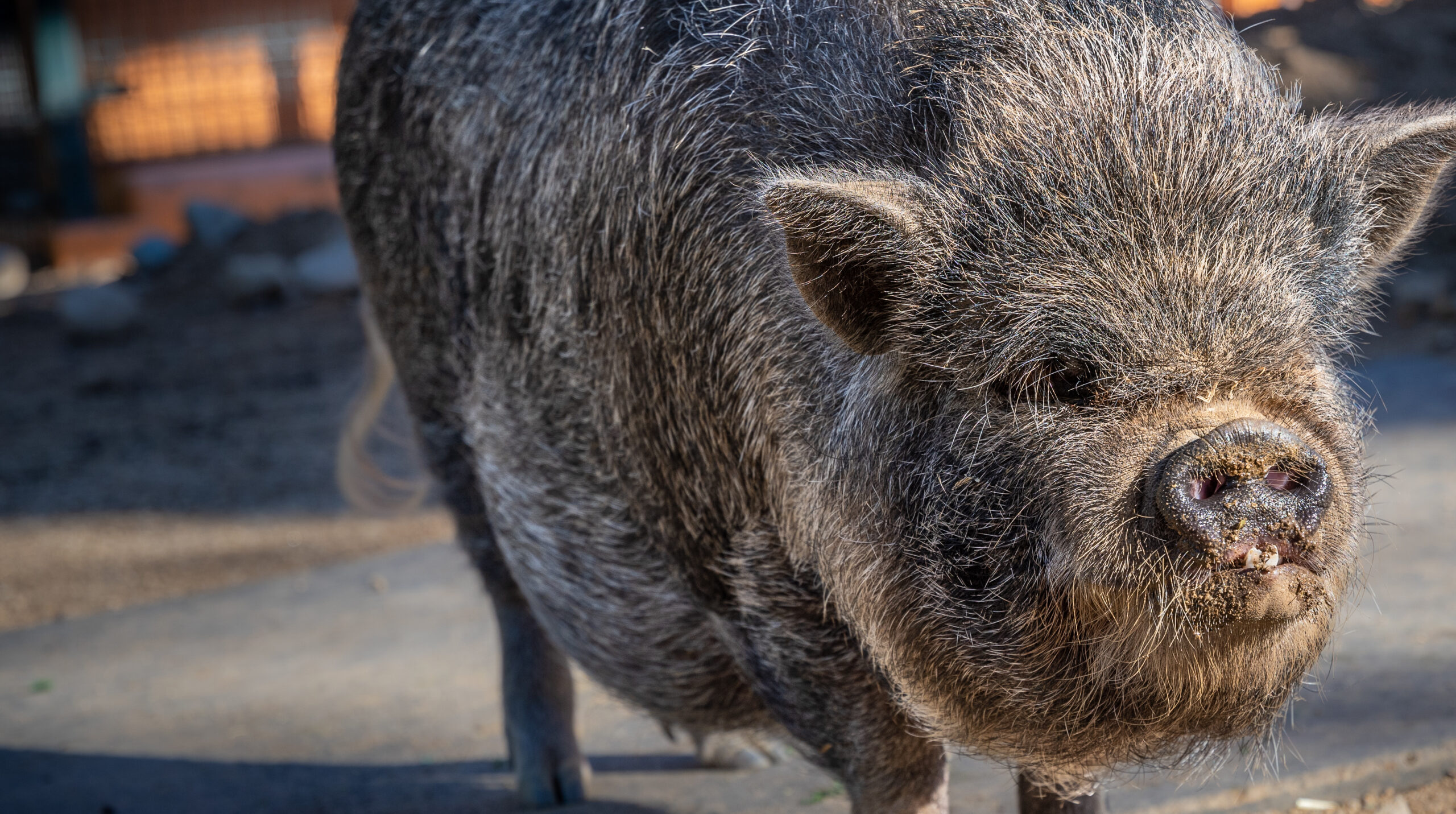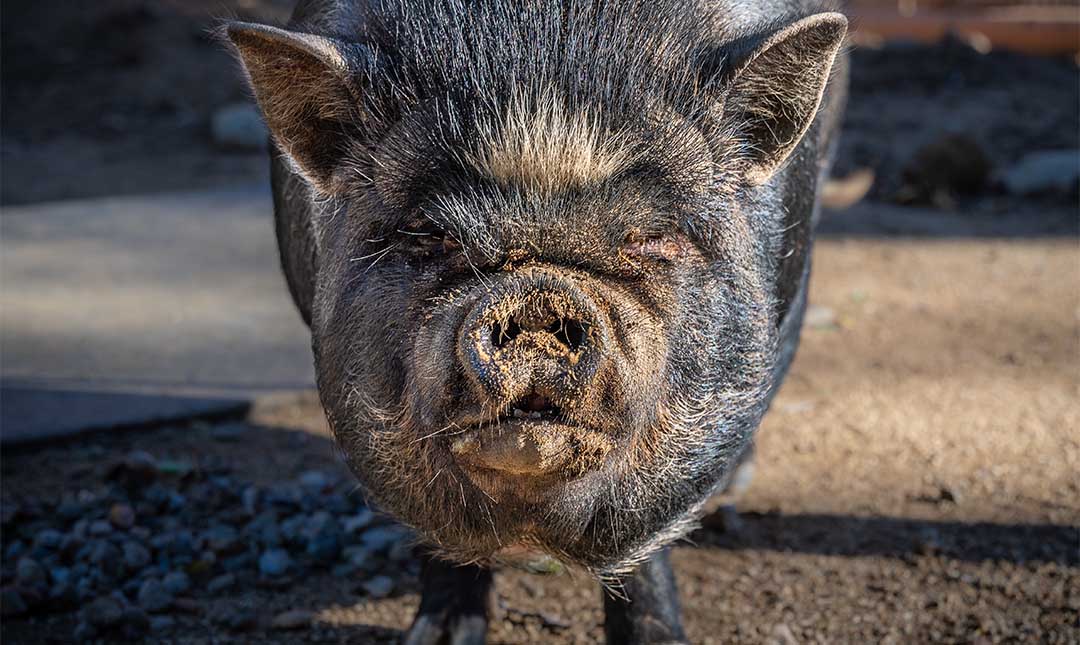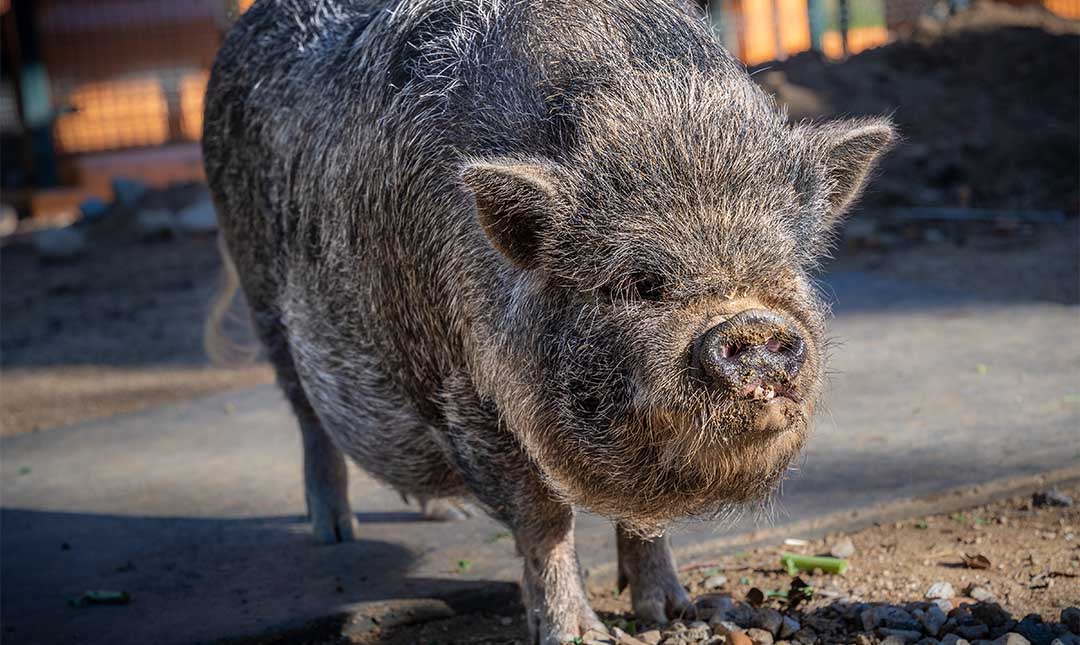About
Pot-bellied pigs have ranged across Eurasia for more than 40,000 years. Pot-bellied pigs in America can be traced to a breed called the “Lon I” from the Red River Delta in Vietnam where they were originally bred for meat. The distinguishing feature of these pigs is their plump bellies—which may even drag on the ground when sows are pregnant! After a gestation period of about four months, four to ten piglets are born. They are able to stand and nurse within minutes of birth. The mother pigs “sing” to their babies when they nurse and the piglets learn to recognize their mother’s voice, running to her when she calls. Pigs are social, living in groups called sounders with six to 20 females and their young. Mature boars are frequently solitary and have tusks that are used to intimidate competitors during mating season. Pigs in human care seek companionship and can form close bonds with other animals and people. Much of their time is spent rooting for food with the disk-like ends of their noses, detecting odors deep underground or even miles away.
In Vietnamese culture, pigs are a symbol of happiness, satisfaction, and wealth in traditional paintings. In the Chinese zodiac, those born in the Year of the Pig are said to share traits with pigs, including intelligence, sociability, diligence, and bravery. Pigs are highly intelligent with excellent recall and concentration, and can be trained like dogs.
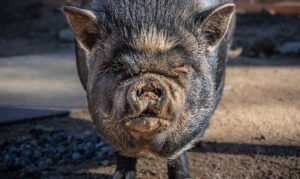
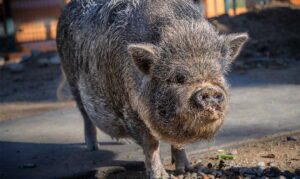
Habitat
Native to Vietnam, these pigs are found in open woodland areas with water nearby and dense vegetation for shelter.
Diet
These pigs are omnivorous, primarily eating leaves, stems, roots, fruit, flowers, and occasional insects, eggs, amphibians, and small reptiles.
Physical Characteristics
An adult Vietnamese pot-bellied pig’s body length is around three feet and they weigh from 70 to 175 pounds. Males are larger than females. Their lifespan in the wild is about 10 years, but in human care, they average 15 to 20 years.

